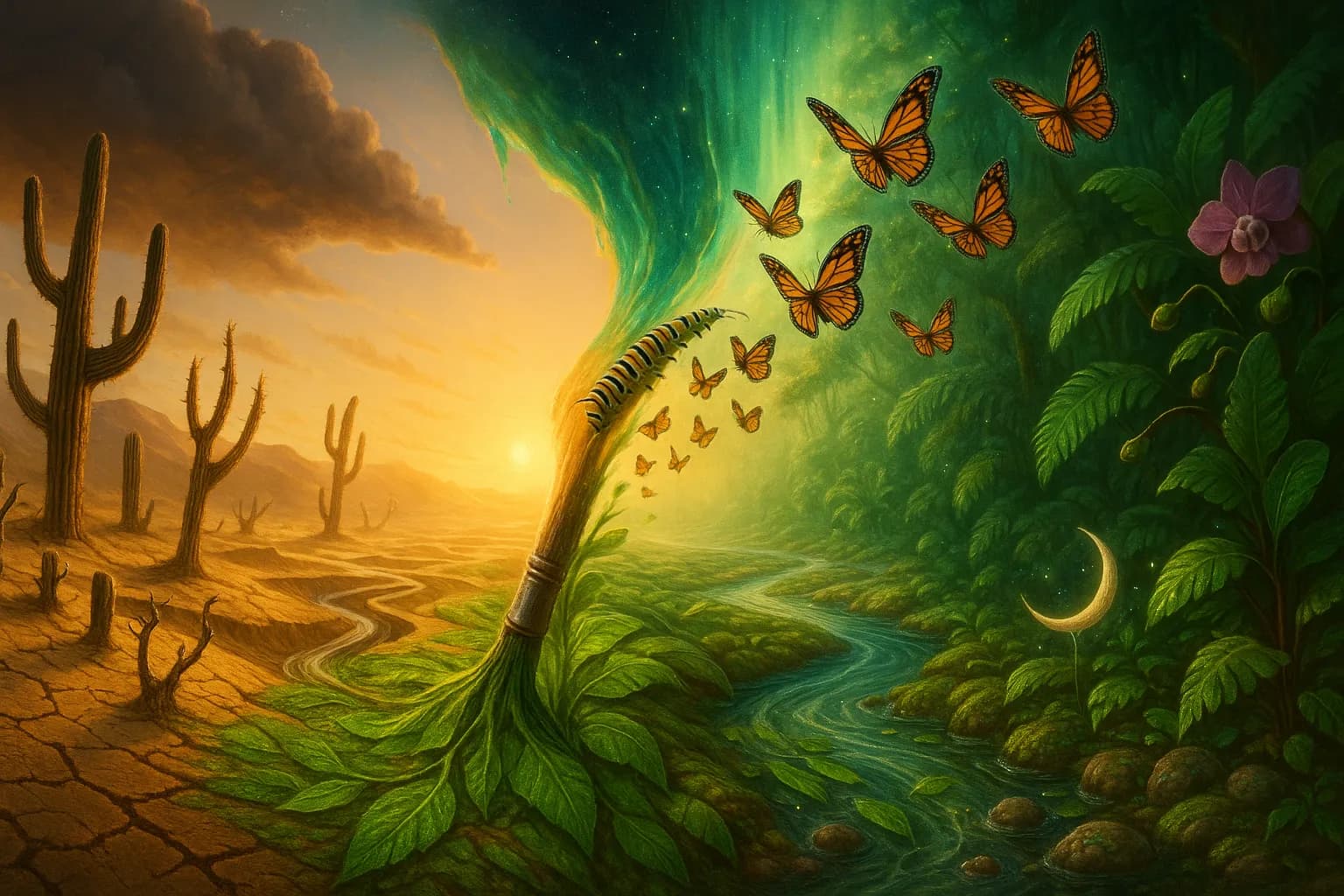Frida Kahlo and the Art of Self-Made Reality

I paint my own reality. — Frida Kahlo
Claiming Authority Over Truth
To begin, Kahlo’s declaration stakes a claim on authorship: reality, for her, is not a neutral landscape but a territory she shapes. She amplified this stance in an oft-quoted remark attributed to her circle with André Breton: “They thought I was a Surrealist, but I wasn’t. I never painted dreams. I painted my own reality.” In saying so, she rejects the idea that art merely records what the eye sees or what the unconscious spills, insisting instead on a truth forged through lived experience. This assertion reframes the painter as a sovereign narrating power—one who selects, edits, and symbolizes. With this frame in place, we can follow how her body, biography, and cultural ties become instruments for composing the world she inhabits.
The Body as Lived Reality
From there, the body becomes Kahlo’s compass. After a catastrophic bus accident in 1925, she painted from a bed-rigged easel, translating pain into image. The Broken Column (1944), where her spine becomes an Ionic pillar, turns anatomical suffering into architecture, giving structure to hurt. Philosophically, this echoes Merleau-Ponty’s Phenomenology of Perception (1945), which holds that the body is our primary way of knowing the world. Rather than documenting an external scene, Kahlo renders sensations—pins, tears, corsets—as the grammar of reality. This embodied perspective seamlessly leads to her most famous strategy: the self-portrait, where the body is not an object on display but the site where history, emotion, and identity converge.
Self-Portraiture and Constructed Identity
Building on embodiment, Kahlo’s self-portraits construct identity with deliberate specificity. In The Two Fridas (1939), dual selves hold hands, their exposed hearts connected by a vessel that both nourishes and bleeds—an image of fracture and survival. Her unibrow and faint mustache, along with Tehuana dress, are not mere signatures but acts of authorship over gender and heritage. The intimate scale and direct gaze echo the Mexican retablo tradition she and Diego Rivera collected, where personal devotionals render private pleas public. In this way, the “self” is not fixed but assembled—through costume, symbol, and stance—preparing us to see how Kahlo folds folk aesthetics and political belonging into her personal cosmology.
Folk Traditions and Political Belonging
At the same time, Kahlo’s “own reality” grows from communal roots. Influenced by ex-voto paintings—small devotional panels narrating miracles—she adopts their clarity of storytelling and emblematic objects. Henry Ford Hospital (1932), with its floating fetus, pelvis, and snail, transforms private loss into a retablo-like confession that the viewer must reckon with. This aesthetic aligns with post-revolutionary Mexicanidad, a cultural movement celebrating indigenous motifs and working-class imagery (seen in Rivera’s murals). Thus, Kahlo’s reality is never isolated; it is stitched to collective memory and politics, allowing the personal to speak the language of the public. This synthesis sets the stage for her nuanced relationship with Surrealism.
Beyond Surrealism: Symbols with Intent
Moreover, while Surrealists in Paris praised her, Kahlo resisted their dream-centric credo. What the Water Gave Me (1938) brims with symbolic fragments—floating bodies, flora, trauma—yet its force comes from biography rather than reverie. The symbolism operates like footnotes to experience, not escape hatches from it. Her New York solo at the Julien Levy Gallery (1938) and encounters with Breton showcased this tension: she used Surrealist tools without surrendering her authorship of meaning. Consequently, symbols in her paintings aim not at puzzles for their own sake but at precision—pinning down sensations and histories that ordinary language fails to hold. That intention anticipates how contemporary audiences negotiate identity through chosen signs.
Contemporary Echoes in Curated Selves
Today, Kahlo’s line resonates in an age of profiles and feeds, where many “paint” reality through images and captions. Yet her example—documented intimately in The Diary of Frida Kahlo: An Intimate Self-Portrait (1995)—suggests that curation is honest only when anchored in experience rather than performance. She shows that authenticity is not rawness without form but form that reveals what hurts, heals, and endures. In this light, the lessons of her paintings extend beyond museums: by choosing symbols responsibly, acknowledging context, and owning contradictions, we make our realities legible to others. Which is why the final turn in her claim is ethical as much as artistic.
The Enduring Lesson of Agency
Ultimately, Kahlo’s statement declares a right to reframe: to turn facts into meaning without falsifying them. Her canvases argue that truth is not only correspondence but coherence—biography, body, culture, and politics arranged so that life can be borne and shared. This is not escapism; it is craftsmanship in the service of survival. By insisting, “I paint my own reality,” she invites us to practice a similar agency: to select symbols that do justice to our histories, to honor pain without letting it define us, and to weave the private and communal into a story sturdy enough to live in.